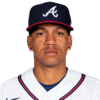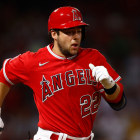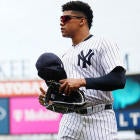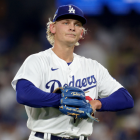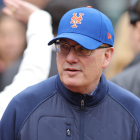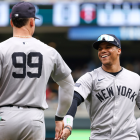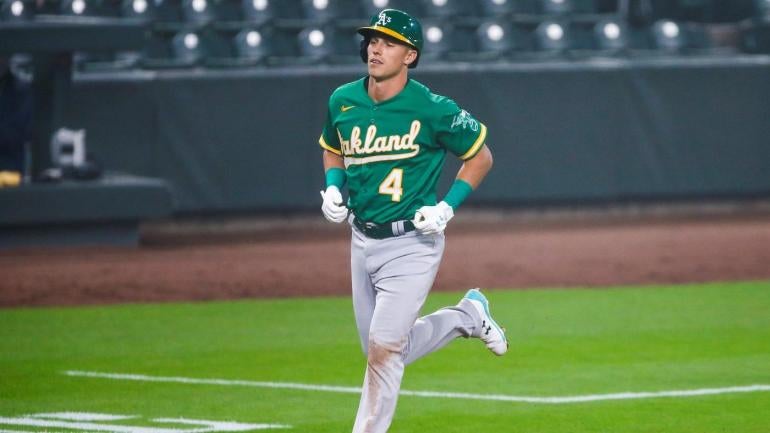
Earlier this month, we here at CBS Sports revealed our ranking of Major League Baseball's top 60 free agents. In the days since, we've explained why a few former All-Star players failed to crack the list. Today, we're going to cut the other direction by highlighting a handful of under-the-radar types who nearly cracked the back end of the list.
To be clear: we're not saying these individuals should be viewed as priority free agents; merely that there's more intrigue to be found with them than you (and teams) might otherwise assume.
Ehire Adrianza had a poor walk year with the Twins, obscuring the fact that he had been a decent hitter (.260/.321/.391, or a 91 OPS+) his first three seasons in town. Oh well. Adrianza isn't starting material, but he's an adequate reserve who can offer value in a few ways. At the plate, he minds the zone and makes a good amount of contact; defensively, he's quick enough to man the keystone and throws well enough to play the left side. There are more famous utility types available who are certain to land bigger paydays and roles. Adrianza is a decent downmarket option for a team in need.
The 60-game season was either going to work for or against a lot of gopherball pitchers. Unfortunately for Chase Anderson, it worked against him. He yielded 11 home runs in 33 innings, bloating his ERA to 7.22 and forcing him into a relief role by year's end. It should be noted that five of those dingers came in a single start, with another three coming in a separate appearance. Home runs don't count for less if they're tightly clustered, but it goes to show how small the sample was if two wayward outings can wreck a season. The funny thing is that there was a lot of good to be found in Anderson's underlying measures: his exit velocity remained better than the league-average; he missed more bats and recorded a higher rate of strikeouts; and he walked fewer hitters. A team willing to accept him as he is, home-run proneness and all, could end up with a cheap fourth starter.
We know, we know: Anthony DeSclafani's topline numbers make him a tough sell (a 7.22 ERA in 33 2/3 frames; 11 hits and nearly two homers per nine innings; and so on). He's here because he altered his slider in a way that generated more drop and depth. In turn, he was able to use the slider as his primary pitch to good effect: opponents whiffed on roughly 36 percent of their swings against it, and accumulated just a .190 batting average against it. Both of DeSclafani's fastballs were smoked all over the place, so he'll need to fix that moving forward if he's to remain a viable back-end starter. A savvy, beachcombing team might instead deploy him in a relief role with the instruction to chuck his slider more frequently than 32 percent of the time.
Jared Hughes overhauled his arsenal with the help of Barton Smith, a professor of mechanical and aerospace engineering at Utah State who is doing his best to introduce the concept of "seam-shifted wake" to the baseball world. Hughes' tinkering may not have appeared worthwhile from an ERA perspective (4.84), but most of his underlying indicators suggest better things are possible. He gained nearly 10 percentage points on his whiff rate while ranking in the 95th percentile of exit velocity and posting a groundball rate of 56.5 percent. Missing bats and generating soft contact on the ground has almost always been a recipe for success. The new-look Hughes, then, deserves the opportunity to compete for a middle-relief role next spring.
This is not an overreaction to Jake Lamb's impressive 13-game stint with the Athletics that saw him deliver seven extra-base hits in 45 at-bats. Rather, it's a direct response to his ball-tracking data, which is a good deal better than you'd expect from someone with a 74 OPS+ since 2018. Lamb hit the ball 95 mph or harder on more than half of his batted balls, putting him 23rd in the majors among qualified hitters -- just ahead of Bryce Harper, Jorge Soler, and Gary Sanchez, among others. He did that while hitting the ball in the "sweet spot" launch angle range (10 to 30 degrees) as frequently as the likes of Francisco Lindor, Andrew McCutchen, and Aaron Judge. That's good company. You don't want Lamb facing lefties, but he looks like a decent (and cheap) bet to be a tolerable, if not good most-days platoon option at either corner-infield position.







